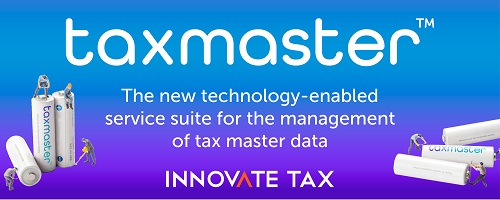By Luís Aires
EMEA Indirect Tax Advisor | Ph.D. Candidate | Author | Researcher on VAT Policy/Case Law and Tax Technology | Lecturer
The terms “artificial intelligence” and “machine learning” immediately bring up thoughts from movies like “The Matrix” where machines become self-aware and want to end the world. While this may make for an exciting plot in Hollywood, it is not reality outside of the theater.
In real life, however, machine learning—which gives computers the ability to see hidden patterns in existing data and progressively improve performance (“learn”) without being explicitly programmed—serves as a practical tool to data analysts. The job is not to turn robots into people, but instead efficiently find recurring themes that would otherwise remain obscured inside of large amounts of data to provide end-users with actionable information.
These technologies have played a pivotal role in reducing fraud, waste and abuse in organizations of all types and sizes, including departments of revenue that collect taxes. As tax season ends, tax agencies can especially benefit from the use of several different machine learning techniques to improve upon their current levels of fraud detection.
RPA, Machine Learning, & AI Defined
There are definite distinctions between these technologies, though sometimes the lines get blurred:
- Robotic process automation (RPA) is an application that performs highly logical automated tasks. These types of tasks can be easily performed if there are clear conditions associated with carrying out the task; for example, “If this is true, do this. If this is false, do that.” RPA can overlay a legacy application as described above; it may also be embedded within an application, if that application is advanced enough.
- Machine learning (ML) refers to the science around teaching computers to progressively improve their performance on a task. In contrast with RPA, which is logical and condition-oriented, machine learning requires the computer to have some degree of cognitive capability. The computer must be trained to detect data patterns or relationships that will then help it to draw conclusions.
- Artificial intelligence (AI) refers to computer systems that can perform human-like tasks. There’s no teaching component involved here; it’s about creating a neural network that intakes large quantities of data and, on its own, builds algorithms that help it determine the right way to perform a task. Also, the term artificial intelligence covers technologies where machines mimic human intelligence to solve complex problems. On one side we find methods where analgorithm,a ‘recipe’ on how to handle a specific set of inputs, drives the computing process that determines or suggests an output. Machine learning resides in this domain, where multiple methods of various levels of complexity are applied to solve different kinds of problems. Some of these techniques need a dataset to ‘train’ the algorithm on how to handle the information.Algorithmic biasis often inherited from the datasets used to train the algorithm. Some systems ‘learn’ how to achieve the optimal result with no supervision. Artificial neural networks mimic the way our brain is constructed. Millions of calculations are performed and sent between the nodes of the network, generating complexity that can become impossible to explain. The ‘black box problem’ refers to opaque calculations in complex algorithms. More advanced imitations of human intelligence, artificial general intelligence (AGI) or superintelligence, still belong in the future, and is not a focus of this document. Neither shall we address robotics.
Uncovering fraud with artificial intelligence
In our highly digitalised societies, artificial intelligence is embedded in gadgets, cars, and consumer goods. Algorithms calculate what music you should listen to based on your previous choices. Machines suggest which book to buy or who to invite for a date. Translation tools are rapidly improving. Algorithm driven chatbots reply to our questions in text or spoken language.
The technology is affecting more and more parts of life in sufficiently digitised economies with a certain level of e-government, where transactions or interactions with authorities to a large extent are digital. Automated decision systems are controversial, but still deployed in social security programmes, within the legal sector, in policing, insurance and security.
Detection of large-scale fraudulent activities require massive usage of online (real-time) data analysis. It requires complex and timeconsuming investigations, typically different from case to case, that deal with different domains of knowledge like financial, economics, business practices and law.
The real challenge is to build adaptive and smart fraud detection system, so it needs special methods of intelligent data analysis to detect and prevent losses. To avoid significant revenue losses, detection logic must recognize complex patterns over periods spanning seconds to months, also must be easily customizable and readily maintainable by specialists in changing business environment. Ideally ensuring compliance and finding fraud requires monitoring millions of daily transactions in real time and not Error-prone invoice data which complicates processing and analysis. Auditable proof of non-compliance is critical to tax enforcement.
AI and machine learning are also applied to uncover or detect money laundering. Tax authorities use AI to predict risk for tax evasion,or to monitor and identify suspicious tenders or bids in public procurement. However, some applications of AI and automated decision systems in society remain controversial. Questions persist on how to handle biased algorithms, our ability to contest automated decisions, and accountability when machines make the decisions. How such systems relate to the right to privacy, the right to explanation, and the‘right to be forgotten‘also remain topics of debate. Nevertheless, due to the efficiency, apparent neutrality, stable performance, and cost savings associated with AI based processes, such tools are likely to be applied in more and more areas in the future.
Tax administrations today handle an unprecedented amount of information flow. As if the complexity of the tax system wasn’t enough, they now find themselves collecting an ever-increasing amount of tax data coming from traditional sources along with digital ones such as digital payments, electronic invoicing and connected devices (e.g. online cash-registers and point-of-sale solutions). At the same time, many administrations are expanding their data collection capabilities even further into new areas, including third parties from online trading, asset leasing, payments to subcontractors and VAT invoices. In this context, machine learning applications are now being used by tax agencies to identify cases having characteristics that could indicate potential fraud. It often helps find subtle clues hidden in mounds of data that are sometimes missed or overlooked by auditors.
The complexity of tax rules make it a challenge for any organization to stay compliant, much less reduce their tax liabilities. Therefore, artificial intelligence is well suited for tasks that require a deep analysis of the tax codes. Using years of previous tax documentation as a foundation for learning, the AI application can provide an in-depth understanding of the tax codes and stays on top of yearly changes. As a result, it’s easier for tax practitioners to identify key areas for possible savings.
For organizations that operate internationally, transfer pricing involves comparing various pricing structures and identifying similar transactions for purposes of ensuring fairness in global operations. Some companies are using artificial intelligence to simplify that comparison process. Rather than having members of the tax team manually search databases for companies that operate in a similar manner, with similar pricing structures, an RPA application can automate that task. There are also companies working on using AI tax software to estimate the extent to which transactions are similar, which will save additional time.
AI can elevate the method of tax forecasting from simplistic modeling techniques (such as linear interpolations or basic regressions) to advanced predictive analytics. For instance, algorithms could analyze corporate and seasonal data help detect trends within various tax filing cycles—an annual, quarterly, monthly, or even more frequent basis. Those trends could then be used as the basis for predicting what’s likely to happen next. Even weather data could be incorporated into the analysis, helping to better forecast sales and tax burdens.
What will the future hold?
Tax agencies have been at the forefront of deploying analytics in government, and AI is no exception. Agencies have benefited from interventions, such as automating the tasks for which they formerly used seasonal labour, to pursuing cases where they would be more likely to recover tax revenue, to making it easier for taxpayers to be compliant through predictive communications projects. This has necessitated new techniques and practices within the organisations themselves.
While there is no one-size-fits-all model, a few general lessons are evident. Analysts and designers are often located near frontline, operational staff, so they can discuss and tailor interventions appropriately. In-house capacity gives agencies the ability to mock up the analytics systems they want before they engage contractors, so that the problem definition clearly reflects the situation on the ground, and technical feasibility has already been demonstrated. New software tools are rapidly becoming available, with 11 OECD organisations beginning to use or experiment with powerful, open-source tools such as R, enabling them to hire and retain talent more effectively than with the less flexible software traditionally used in the sector.
Challenges remain, though. Transparency is a doubleedged sword – making a system too open may promote gaming by individuals seeking to evade the tax system. It may also reveal uncomfortable truths about areas or sectors that are neglected or disproportionately targeted by auditors. Furthermore, analysing uncertain and often expensive AI design initiatives to understand whether they will provide sufficient benefit relative to required investment is also an area in need of further methodological development. A complex AI system has high risks but potentially high rewards – it might have huge benefits, or might not work at all. Yet these issues are not insurmountable, and new balances, methodologies and tradeoffs will continue to be created and navigated. Looking ahead, AI systems are set to continue to make tax easier to pay for citizens and fairer in its collection and enforcement for all.














